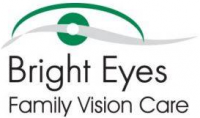On Monday, the National Institute of Health (NIH) released a study showing that there is a more effective treatment for children who have a common reading-related vision disorder. The new study concludes that office-based Vision Therapy along with at-home reinforcement activities is much more effective at treating convergence insufficiency that at-home activities alone or placebo treatment.
Convergence refers to the natural ability of the eyes to focus and align while viewing objects up close. Convergence insufficiency (CI) is a common childhood eye coordination problem, which leads to some or all of the following: slow reading, eye strain, headaches, and blurred or double vision. Children with CI have corresponding issues in reading and concentrating, which ultimately impact learning. CI is often missed in many routine vision screenings because these screenings test distance vision, not the visual skills required for reading. For this reason many children can be misdiagnosed with learning disabilities when, in fact, they have a treatable eye condition.
The NIH study was a collaboration among both optometrists and ophthalmologists involved in nine sites throughout the United States. Mayo Clinic researchers determined that in-office vision therapy combined with at-home activities was highly effective for treating convergence insufficiency (CI), compared with home-only therapy or placebo treatment. After 12 weeks, 75 percent of children who had weekly office-based and home-based therapy achieved either full correction or had significantly fewer symptoms of CI, compared to between 33-43 percent in the two home treatment groups and placebo group.
"As this study shows, once diagnosed, Convergence Insufficiency can be successfully treated with office-based vision therapy by a trained therapist along with at-home reinforcement,” said principal investigator Mitchell Scheiman, O.D., of Pennsylvania College of Optometry at Salus University. “This is very encouraging news for parents, educators, and anyone who may know a child diagnosed with CI."
"We found decreases in the frequency and severity of symptoms that might make schoolwork more difficult. Parents reported that they saw a significant decrease in their child having difficulty completing schoolwork at school or at home, appearing inattentive or easily distracted when completing schoolwork, and avoiding schoolwork. In addition, parents reported that they worried less about their child's school performance," added Scheiman.
The researchers followed 221 children nationally, ages nine to 17, divided into four study groups, two of which received only home-based therapies. One group did simple daily exercises for 15 minutes, trying to focus on a moving pencil. A second home-based group performed a shorter version of the pencil exercise and a series of computer-based exercises using special software. A third group did an hour of supervised therapy in a clinical office each week along with 15 minutes of prescribed exercises at home five days a week. The fourth group, the placebo or control group, did office and home exercises designed to look like real therapy but had no effect. Follow-up exams were held after the fourth and eighth weeks and at the end of the 12-week study. A 12-month follow-up study will be conducted to examine long-term effects of these CI treatments.
While there have been hundreds of optometric studies over the years, the CITT is the first scientific study to look at these treatment protocols. Children in all three treatment groups experienced improvement, though it’s not clear whether any improvement in the home groups was due to a placebo effect. About 75 percent of the children who had weekly office-based therapy coupled with at-home exercises experienced either full correction of their vision in 12 weeks or saw marked improvements, compared to 33-43 percent in the two home treatment groups and placebo group. Researchers say that the lower cost of home therapy may be a factor in its popularity, but they point to the high percentage of normalized vision in the office-based sample after 12 weeks as an indicator of quality outcome in the shortest period of time.
The study was published in the Oct. 13 issue of the journal Archives of Ophthalmology, and was funded by the National Eye Institute (NEI), part of the National Institutes of Health. Others involved in the research from Mayo Clinic were Jonathan Holmes, M.D.; Melissa Rice, O.D.; Virginia Karlsson; Becky Nielsen; Jan Sease; and Tracee Shevlin.


An interesting interview with the lead investigator of the study. Click the title to watch.